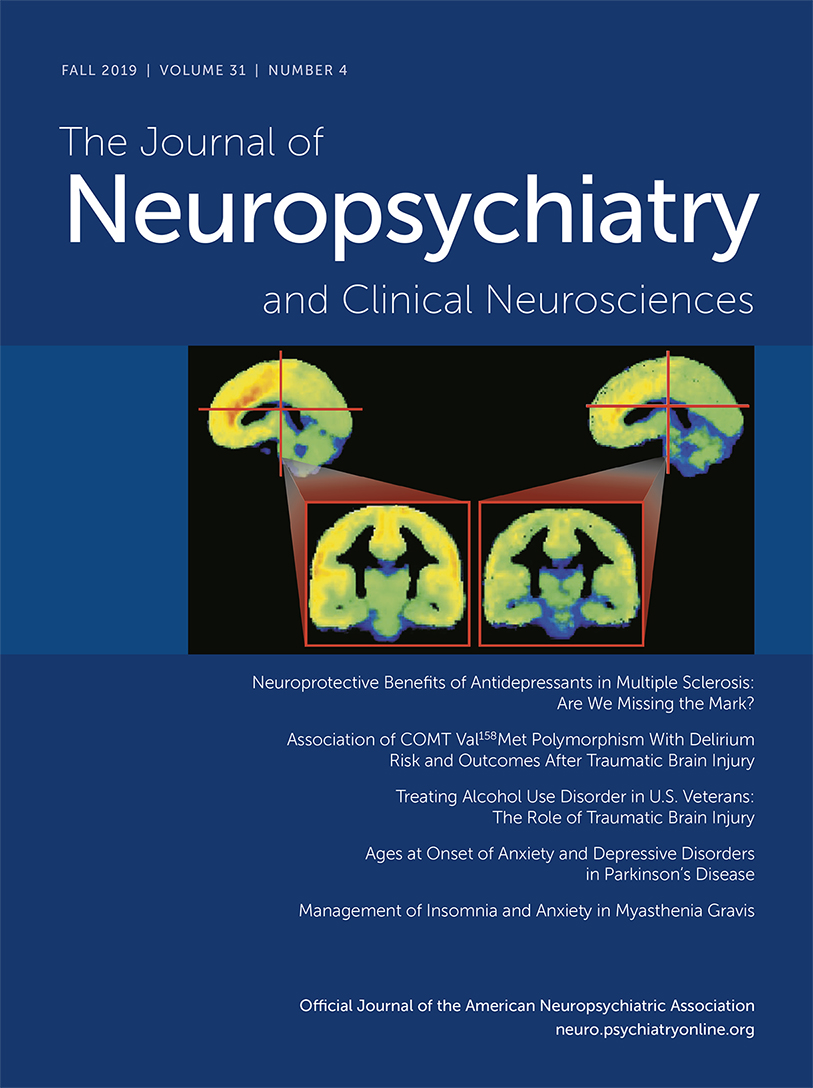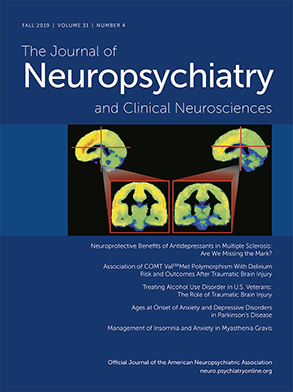To the Editor: The review article by Sarkis et al. (
1) on the phenotypic presentation and management of anti-
N-methyl-D-aspartate receptor (NMDAR) encephalitis is a timely, scholarly, and thorough summary of previous reports of this rare but challenging diagnosis. By illustrating features of this disorder, the authors enhance awareness and provide information to guide diagnosis and management.
However, it is equally important to remind readers that many of the features that Sarkis et al. ascribe to NMDAR encephalitis are nonspecific and can be observed not only in functional psychoses but in a broad range of encephalitides. When encephalitis is suspected on the basis of these signs and symptoms, it is important not only to test for anti-NMDAR antibodies but to conduct a thorough investigation for infectious, autoimmune, and other inflammatory causes of encephalitis (
2). For example, early identification and specific treatment of some forms of acute viral encephalitis can be critical to survival (
3).
The diagnostic dilemma in distinguishing encephalitis from functional psychosis has been reported and discussed for most of the past century (
4). In 1965, Hollender et al. (
5) proposed that fever, headache, or catatonia in any patient presenting with symptoms of schizophrenia suggests encephalitis until proven otherwise. Many of the findings attributed to NMDAR encephalitis have been described previously in cases regardless of whether an infectious pathogen was identified, immune mechanisms were implicated, or no triggering factor could be found. For example, previous reports of infectious and postinfectious encephalitis masquerading as a functional disorder indicate that 35% of patients present with psychosis, 27% with mood changes, and 33% with catatonia (
2,
6). Affected patients are most often young and female and frequently experience a flu-like prodromal illness several weeks prior to diagnosis. Neurological correlates include fever, headaches, seizures, and cognitive deficits. While delusions and hallucinations are common and nonspecific psychiatric manifestations of encephalitis, several more dramatic and primitive symptoms typical of orbitofrontal (lability, disinhibition, and akinetic mutism) and temporal (rage, terror, fear, and foreboding) lobe syndromes have been described that are uncharacteristic of functional disorders but may serve as “red flags” for underlying encephalitis. These behaviors correlate with imaging and postmortem studies showing a predilection of viruses and associated antibodies for orbitofrontal and temporal lobes, the limbic system, and basal ganglia structures (
6).
In addition, the sensitivity and susceptibility of encephalitides, in general, to adverse effects of dopamine-receptor blocking antipsychotics, including neuroleptic malignant syndrome, have been well documented, long before NMDAR encephalitis was identified as an entity (
2,
6–
9).
Sarkis et al. are to be commended for, once again, highlighting the need for clinical acumen and awareness of the possibility of encephalitis presenting with psychiatric signs and symptoms, as well as the need for caution in the use of antipsychotics. However, these signs are not pathognomonic for NMDAR encephalitis but rather reflect the tendency of encephalitis of all causes to affect subcortical components of circuits underlying neuroanatomic behavioral syndromes. Atypical neuropsychiatric features accompanying new-onset psychosis should prompt broad diagnostic considerations, including neuroimaging, EEG, and complete serologic and infectious CSF examination, as well as the need for antiviral or other specific treatments.

